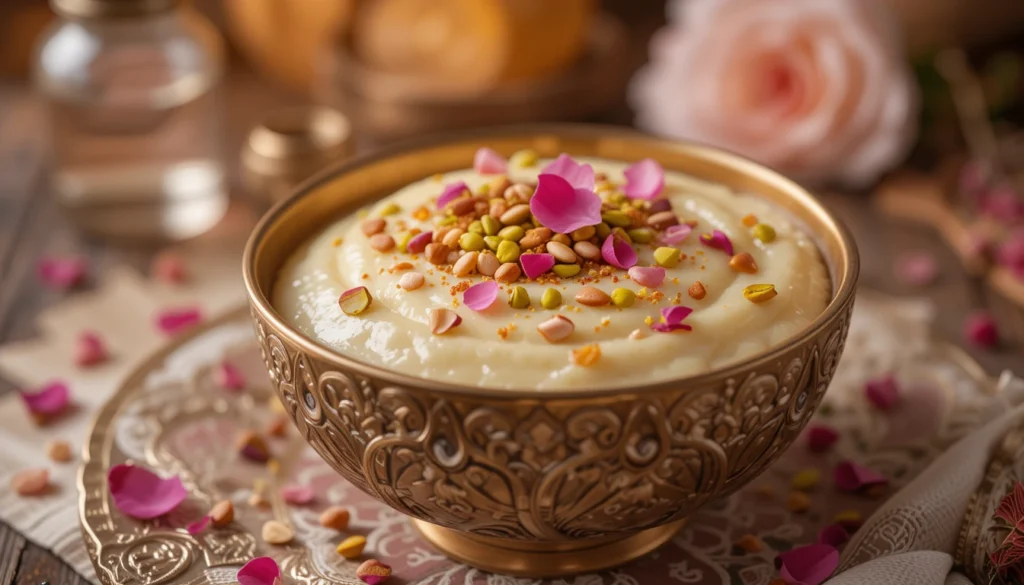
what is the cultural significance of mouhalabieh
What is the cultural significance of mouhalabieh is a traditional Middle Eastern dessert known for its creamy texture and delicate flavor. Its origins trace back to the Umayyad period when it was first introduced as a dish favored by the nobility. The name of this dish is believed to have been derived from Al-Muhallab ibn Abi Sufra, a renowned general, although its exact historical connections remain a topic of debate. Over the centuries, muhalabieh has evolved from a simple milk pudding to a culturally significant dish enjoyed across various regions in the Middle East. Today, it is a dessert that embodies history, tradition, and the culinary ingenuity of the region. The preparation methods and ingredients have changed over time, but its essence remains a tribute to the rich past of Middle Eastern cuisine.
Muhalabieh as a Symbol of Hospitality
In Middle Eastern households, hospitality is a cornerstone of social interactions. Muhalabieh is often served to guests as a gesture of warmth and generosity. It is considered a sign of respect and appreciation for visitors, making it a staple in gatherings and celebrations. The act of offering this dessert is deeply ingrained in cultural traditions, symbolizing the host’s willingness to share their blessings with others. The way muhalabieh is presented, often in beautifully adorned bowls with crushed nuts or rose petals, further emphasizes the effort and care that goes into welcoming guests. Whether served during intimate family gatherings or grand feasts, muhalabieh remains a dish that signifies the deep-rooted tradition of hospitality in Middle Eastern culture.
Muhalabieh in Religious and Festive Celebrations
The significance of muhalabieh extends to religious and festive occasions. It is commonly prepared during Ramadan, a sacred month for Muslims, as a light and soothing dessert to break the fast. The smooth texture and mild sweetness provide nourishment after a long day of fasting. Additionally, muhalabieh is a favored treat during Eid celebrations, weddings, and family reunions, reinforcing its role as an integral part of joyous occasions. In Islamic traditions, sharing food is highly encouraged, and desserts like muhalabieh allow families to come together in a moment of unity and gratitude. It is also a popular choice for special ceremonies such as baby showers and engagement parties, where its elegance and simplicity are celebrated. The tradition of preparing muhalabieh during these moments highlights its spiritual and communal value of what is the cultural significance of mouhalabieh.
Regional Variations and Adaptations
Different Middle Eastern regions have put their unique spin on muhalabieh, making it a versatile dish with multiple variations. In Lebanon, it is often garnished with orange blossom water and crushed pistachios, enhancing its aromatic and nutty flavors. In Egypt, rose water is commonly used to infuse the dessert with a fragrant essence. Some variations include the addition of almonds, saffron, or cinnamon, further enriching its cultural diversity. These regional adaptations highlight the local ingredients and preferences, making muhalabieh a dynamic representation of Middle Eastern culinary heritage. The preparation methods can also differ, with some regions favoring a firmer consistency while others prefer a more delicate, pudding-like texture. These subtle differences showcase how muhalabieh is deeply ingrained in the identity of various communities, adapting to local tastes and preferences over centuries.
The Role of Muhalabieh in Family Traditions
Muhalabieh holds sentimental value for many Middle Eastern families, as its preparation is often a shared experience among generations. Mothers and grandmothers pass down recipes, ensuring that traditional cooking techniques are preserved. The process of making muhalabieh fosters family bonding, where storytelling and cultural teachings are intertwined with culinary skills. This transmission of knowledge keeps cultural heritage alive and strengthens familial ties. Children are often taught how to stir the mixture carefully to achieve the perfect consistency, and they learn the importance of patience in cooking. The shared experience of preparing and enjoying muhalabieh becomes a cherished memory, reinforcing its cultural significance. It is not just about making dessert; it is about creating lasting moments of togetherness and love.
Muhalabieh and Its Connection to Health and Well-being
Beyond its cultural significance, muhalabieh is appreciated for its nutritional benefits. Made primarily from milk, sugar, and starch, it provides essential nutrients such as calcium and protein. Some traditional recipes incorporate almonds and honey, which add to its health-enhancing properties. The dessert is often recommended for individuals seeking a light yet satisfying treat, particularly for children and the elderly. Its soothing texture and digestibility make it an ideal dessert for those recovering from illness, further cementing its role in Middle Eastern households. Many families also prefer muhalabieh over heavier desserts due to its gentle effect on digestion. Additionally, with the increasing awareness of health-conscious diets, some variations now use alternative sweeteners and plant-based milk options, making muhalabieh a dessert that continues to evolve with modern dietary needs.
Muhalabieh in Contemporary Culinary Trends
In recent years, muhalabieh has gained recognition beyond the Middle East, appearing in gourmet restaurants and fusion cuisine. Chefs experiment with new flavors and presentations, incorporating elements such as fruit compotes, chocolate drizzle, and exotic spices. This modern reinvention of muhalabieh showcases its adaptability while preserving its cultural roots. Social media and food blogs have also played a role in popularizing this dessert, making it accessible to a global audience. With its photogenic appeal and unique flavor profile, muhalabieh has found its way onto menus in international restaurants, often paired with modern twists such as caramelized nuts or edible flowers. This fusion of tradition and innovation ensures that muhalabieh. Remains relevant in today’s ever-changing culinary landscape of what is the cultural significance of mouhalabieh.
The Emotional and Nostalgic Value of Muhalabieh
For many individuals, muhalabieh evokes childhood memories and a sense of nostalgia. The aroma of rose or orange blossom water. The creamy consistency, and the comforting sweetness transport people back to cherished moments with family and loved ones. This emotional connection reinforces the cultural significance of muhalabieh. As it represents more than just a dessert—it embodies tradition, love, and shared experiences. Many people recall their grandmothers preparing muhalabieh in the kitchen, carefully stirring the ingredients while sharing stories of the past. The dessert serves as a bridge between generations, carrying with it the essence of home, warmth, and tradition.
Conclusion
What is the cultural significance of mouhalabieh is more than a simple milk pudding. It is a cultural emblem of hospitality, tradition, and togetherness. Its deep-rooted presence in Middle Eastern history and society highlights its importance beyond the realm of food. From family gatherings to religious celebrations, muhalabieh continues to be a beloved dessert that bridges generations and preserves cultural identity. As it gains international recognition, its essence remains unchanged—a symbol of warmth, generosity, and heritage.
FAQs
What are the main ingredients in muhalabieh?
Muhalabieh is traditionally made from milk, sugar, cornstarch, and flavored with rose or orange blossom water. Some variations include garnishes like pistachios, almonds, or saffron.
Why is muhalabieh popular during Ramadan?
Muhalabieh is light, nutritious, and easy to digest, making it an ideal dessert for breaking the fast during Ramadan. Its subtle sweetness provides energy without being overwhelming.
How does muhalabieh differ across Middle Eastern countries?
Each country has its own variation of muhalabieh. Lebanon often uses orange blossom water and pistachios, while Egypt favors rose water. Some regions incorporate almonds, saffron, or other spices.
Is muhalabieh considered a healthy dessert?
Yes, muhalabieh is relatively healthy compared to heavier desserts. It provides calcium and protein from milk, and some recipes use honey and nuts for added nutritional benefits.
Can muhalabieh be made vegan?
Yes, muhalabieh can be made vegan by substituting dairy milk with plant-based alternatives like almond or coconut milk. The texture and flavor remain similar while catering to dietary preferences.





